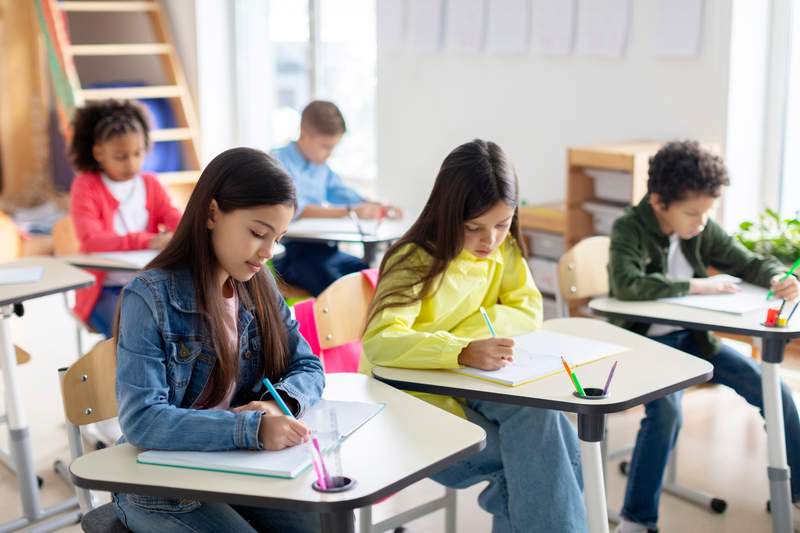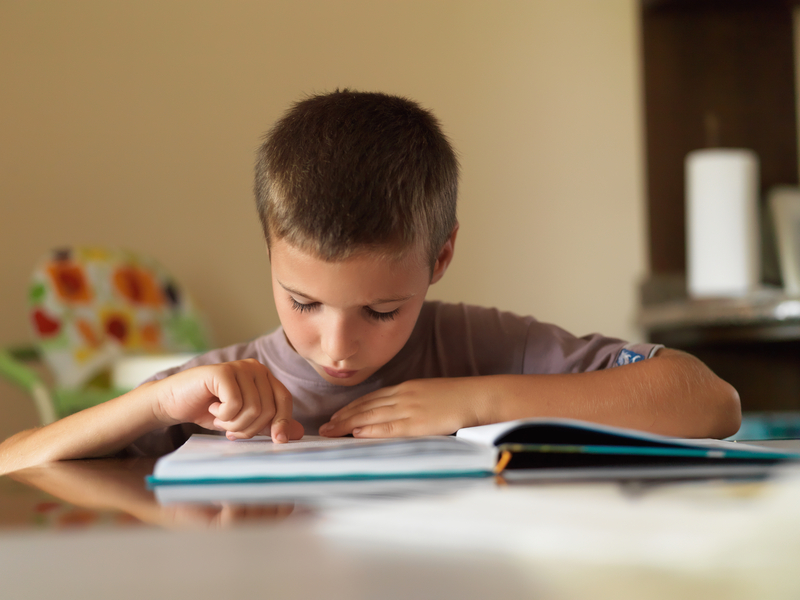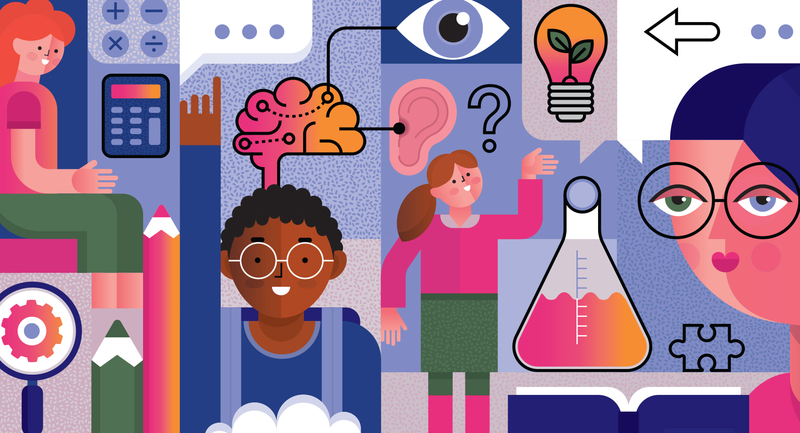LEO: I don't think Rosa Parks was a hero.ANA: What do you mean? She's famous!LEO: All she did was sit down on a bus.ANA: But they wrote books about her.LEO: They write books about lots of people. They're famous, but maybe they're not heroes.ANA: I guess that's true. So, what's a hero?LEO: Someone who does great things for others. Helps others, saves them—like Superman.ANA: Rosa Parks was like that. She was put in jail for sitting on the bus.LEO: So? Lots of people get put in jail.ANA: But that got the bus boycott thing going.
Conversations like this tell us a lot about our students. For instance, this one might show a teacher that students understand some of the target ideas of the lesson, that they appropriately listened and responded to partner comments, and that they might need improvement in clarifying and elaborating within each conversational turn. So why are student conversations rarely part of the "student work" that teachers, schools, and districts analyze to inform and improve learning?
Conversations are hard to quantify, and conversational skills aren't included in most high-stakes tests. The assessments schools tend to use (quizzes, multiple-choice tests, and writing prompts) generally focus on knowledge and skills that are easier to assess—how to figure out a new word, find a main idea, write an introductory paragraph, and so on. But none of these assessments can capture how a person clarifies, builds, and negotiates ideas with another human being. Conversations, however, offer a wide range of formative data.
Students need us to focus intentionally on developing their abilities to communicate and negotiate ideas with other people. Indeed, many of the high-stakes situations our students will face in life, ones where they'll need to prove themselves, will involve conversations. Universities and businesses are looking for communication and collaboration skills. These skills enable an individual to work with others to build ideas and solve problems. And every person needs to be able to communicate and collaborate with friends, family, community members, and those with whom we share both the slices and the major chunks of life.
To capture the extent to which students demonstrate these important abilities, teachers would do well to analyze conversations. We often directly help teachers across diverse grade levels do just that—and use that data to improve student learning.
Because analyzing student talk to learn what students know, think, and can do as conversationalists is new to many teachers, let us suggest some strategies.
What Conversations Capture
Attending to conversations during a lesson lets teachers observe the following dimensions of learning and development—especially if teachers ask the accompanying questions:
- Collaborative conversation skills. Can the student work with another student to explore ideas of value? How well does he or she clarify, support, negotiate, and evaluate ideas?
- Content understandings and thinking skills. What understandings or misunderstandings of a concept do students have? To what degree does the student grasp the content? How well is the student using the thinking skills emphasized in this lesson or unit?
- Oral language skills. How well does the student articulate thoughts orally? What language choices does the student make? What strengths and challenges does the student have in using oral academic English to communicate?
- Listening skills. How well does the student listen to others? What does he or she do or say to show listening?
- Learning approaches and engagement: How does the student approach learning in this discipline and learning in general? How engaged in the topic is he or she?
Listening to conversations also gives teachers information that pertains to the learning environment. Teachers might notice fresh perspectives or solutions students bring to the discussion. Teachers might also gain insights into power dynamics (for instance, whether participation of voices is equitable or skewed by patterns that follow race, gender, or language status).
The Conversations
Consider two short exchanges and the instructional next steps each implies. Imagine that in considering the following interactions, you're seeking insight into three elements: the quality of students' collaborative conversation skills, how well students articulate thoughts aloud, and their level of understanding of important content. (Although we have the luxury here of analyzing written conversations, teachers will mostly need to keep the checklist of elements they create in their heads as they take notes on live conversations.)
Conversation 1. A 2nd grade teacher prompts students to share with their partners how the water cycle works, using vocabulary they just learned (evaporate, vapor, condense, precipitate).
MAYRA: It starts with water. Then it vapors to the sky. Then clouds and falls. Then a river goes down.XAVIER: The sun heats it up. Water goes up to clouds. It goes to the mountain. And then it falls into the river. That's all.
Although this interaction is actually a pair-share, not a conversation—because students don't go back and forth to build up ideas together—it gives insights into these students' content understandings and oral language skill. Both students have a solid grasp of the water cycle, but they aren't using the taught vocabulary. They use mostly complete sentences and some sequence markers for the cycle. Clues to the students' level of engagement are also here: Mayra and Xavier are both engaged enough to respond, but not engaged enough to elaborate (beyond just making the teacher happy by providing an easily anticipated answer).
If other students reveal similar needs, next steps could include modeling and scaffolding the use of target vocabulary in interactions and establishing a more engaging purpose for interactions. The teacher might have students share ideas to create a multimedia presentation on the water cycle.
Conversation 2. These 5th graders describe what they think the author is trying to teach in the story they just read:
- ALEX: I think it's about not being selfish.
- LARA: What do you mean by selfish?
- ALEX: The guy, Seeley, he changed. At first he was all, "it's all about me." He wanted to win and be better than his friends.
- LARA: I agree. But after the accident, he just wanted to have friends.
- ALEX: They forgave him.
- LARA: How?
- ALEX: He gave them back the marbles.
- LARA: Maybe that's what author wants to teach. We should forgive people.
- ALEX: What makes you think that?
- LARA: The title is The Marbles, and Seeley gives marbles back. Like to forgive.
Now this is more of a conversation. These students build an idea with their back and forth. Close examination reveals their conversational skills: Both students ask clarifying questions (lines 2, and 6), support their ideas using text details (lines 3, 4, and 7), and negotiate ideas (lines 4, 8, and 9). Alex and Lara's oral language is informal, which is typical (even for fluent speakers of academic English) when two people begin building up an idea together. That said, they use complete sentences and some precise vocabulary (selfish, forgive). A good next step for these students would be to guide them in elaborating on their ideas by using two or more sentences during their conversational turns.
Making It Happen
How can teachers do this kind of analysis with many students and many conversations happening simultaneously? Very strategically. Having some procedures and tools ready helps.
For instance, a teacher might take any of the dimensions of learning that conversations can measure (collaborative conversation skills, content understandings, and so on) and make a rubric for that dimension to use in assessing conversations. It's helpful for students to develop such a rubric with their teacher, to see what that teacher is looking for. For an online course, Jeff has developed protocols that teachers—or teams—can use to analyze and reflect on student conversations.
Let's look more deeply into how teachers can leverage student conversations by exploring how several teachers analyzed conversations—and changed their instruction.
Navigating Disagreements
One 4th grade team we worked with improved students' abilities to negotiate ideas in language arts. They designed and watched lessons together as part of an iterative lesson study process. As students engaged in conversations related to each lesson, each teacher quietly watched a pair of students and wrote down everything they said, looking for evidence of content understanding, language use, and conversation dynamics. The team created a rubric that emphasized their top priorities in improving conversational skills, established a consistent scoring approach, and scored several conversations on these dimensions.
One trend the team identified was that students often used the phrase "I disagree," but then stopped talking. They didn't ask clarifying questions to learn more about their differing ideas, nor did they explain or justify their differing views. The teachers planned a series of mini-lessons to model ways to progress through a discussion involving an academic disagreement and to give students opportunities to practice this skill. They chose a short video excerpt from a news show in which experts with different opinions disagreed with one another, and they engaged students in identifying specific conversational moves that they could try in their own disagreements. One planned lesson let students use an app called Sock Puppet—with which students record their voices to build mini-conversations between digital puppets—to create and compare examples of conversations involving disagreement.
Another shift the team made was to go beyond having students share in pairs in response to a teacher question (usually some variant of "do you agree or disagree?"). They instead designed relevant, debate-worthy discussion tasks, such as collaborative engineering challenges that required shared decision-making over several iterations.
After a month of implementing these shifts, the team planned a new lesson to teach and observe together. Their observations revealed definite improvement in student engagement and conversation skills. Students were no longer going through the motions; they were on the edges of their seats—listening, probing, and extending one another's thinking in new ways.
Learning to Build a Conversation
Ms. Lopez, a 10th-grade science teacher, noticed that in most partner conversations she structured about science topics or texts, students each gave one answer to the question and then stopped talking. They didn't listen to one another or construct ideas together. When the same partners engaged in a lab, however, she heard them ask clarifying questions, debate an idea, and explain their thinking with examples.
Mrs. Lopez realized that the tasks she had structured about science texts were limiting students' conversations. She moved from asking questions with short, clear answers to assigning more open-ended tasks that required learners to analyze a complex concept or debate information to clarify and justify ideas—similar to tasks within their labs. For example, instead of just asking student groups to share the unique characteristics of water that living organisms need, she told them, "You have an organism you need to keep alive. Imagine water doesn't exist, and you need to invent a liquid to sustain this creature. Knowing how chemistry works in your organism, what features must this liquid have?"
Analyzing Conversations Collaboratively
Educators can also bring conversation analysis into ongoing efforts to collaborate as professionals. Here are two good ways to do so.
1. Record and Analyze Conversations
With a colleague or team, plan a conversation task you'll each try in the classroom. Have each teacher film or audio-record students performing the task and bring a 30-second excerpt of the conversation to a meeting for analysis. You might also transcribe a short conversation. Although transcribing adds time, it has many advantages: It's easier to reread and annotate a written conversation than to rewind and tag a video, and written conversations are easier than videos to make anonymous. Focus your analysis by using a rubric or checklist that emphasizes your team's student learning priorities.
Closely analyzing recorded conversations together helps teachers build shared understanding of their goals for student communication and their success criteria, as does calibrating their scores on a shared rubric. Teachers' conversation analysis skills deepen.
2. Plan and Observe Live Lessons
Teachers might also collaborate to plan, teach, and observe lessons, using lesson study or observation inquiry. Analyzing real-time conversations through the lesson study process helps teachers plan and test new approaches for improving student dialogue and collaboration. Educators can explore how various tasks and instructional scaffolds affect how students converse.
A Necessary Shift
As schools make collaboration and communication skills a priority, assessment practices need to change. It's not enough to talk about building students' collaboration and communication while we focus all the "data-driven" efforts in schools on content assessments that yield easy-to-quantify results. If we're truly committed to preparing students for the 21st century, we must assess the competencies that are most important for students to thrive.
In fact, we believe that if you do a cost-benefit analysis of conversations as formative assessment, you'll find you get multiple important insights for the price of one analyzed conversation—for at least two students at the same time!








